A little while ago, I received an inquiry that I thought was pretty interesting.
There are so many embroidery stitches, but how do people really use them all? If I want to learn them, what’s the best way to go about it? And then how do you put them to use?
It’s actually more than one question, and it generates a whole slew of possibilities for answers.
My first answer was going to be simple, “You don’t.”
People, taken individually, don’t tend to learn every embroidery stitch under the sun, and they certainly don’t use all the embroidery stitches that have been implemented in stitchery over the ages in one project – or even in a whole lifetime of projects.
Most stitchers stick with a relatively small repertoire of stitches, in fact. And there’s nothing wrong with that!
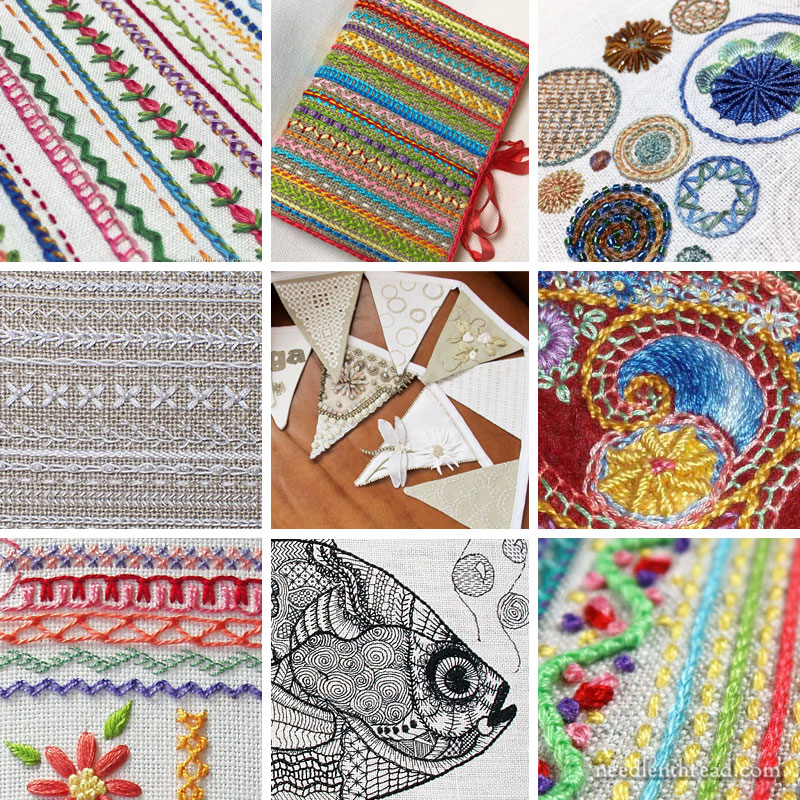
But I figured that’s a rather simplistic answer.
If you’ve been hanging about on Needle ‘n Thread for a while, you know that I get into the whole notion of “playing” with embroidery stitches – of “sampling” (making samplers) with stitches, and in general, exploring stitches just for the fun of it.
But do I actually use all the stitches I’ve ever explored in any one project, let alone in any project at all?
Not necessarily.
A good example of this would be the plaited braid stitch. This is a complex stitch of many movements, and it eats up a heck of a lot of thread.
Still, it’s a fun stitch to know. It can certainly be a show-stopper and add a WOW element to piece of embroidery.
But I’ve never actually implemented it in a real project. I’ve played with it. I’ve practiced it. I’ve worked it out in small design samples and such. But do I have a finished project with the plaited braid stitch in it? No.
Maybe some day I will. But at this point, I don’t. Was it a waste to learn the stitch and master it? Not at all.
Learning Lots of Stitches
If you want to go about learning lots of stitches just for the fun of learning them, you don’t have to go about it in a specific way. You can just set up a piece of fabric and start playing with the stitches.
You never really know what will result! It doesn’t have to be anything formal. It can just be a completely random sampler of embroidery stitches. I’ve written about such samplers.
This article talks more in depth about the subject, and it also supplies some tips and other resources on working your own (random or not) sampler while learning embroidery stitches.
Using Lots of Stitches
Just because you learn a lot of stitches doesn’t mean you’ll necessarily use them all in finished projects.
But you can definitely benefit from learning the mechanics of many embroidery stitches. If nothing else, you’ll become very comfortable with needle and thread. You’ll understand how to follow stitch instructions. You’ll figure out how to trouble shoot. You’ll discover all kinds of things about threads, needles, fabric, and how they relate to each other.
Do you have to use every stitch you learn in a project?
No.
But if you want to embark on a project that employs lots of stitches, you certainly can! And there are many ways to go about doing it. Here are some ideas:
This blackwork fish project from eons ago is a sampler of sorts. It employs all kinds of stitches throughout the whole project and the result is a cohesive whole image.
This little needle book was made from a piece of fabric stitched up like a band sampler (with stitches and composite stitches worked in rows or bands).
The Leafy Tree is a stitch sampler of sorts, too. It employs a good array of stitches used throughout the leaves on the design, to make a cohesive whole.
This band sampler that I started in 2021 is just a band sampler and it’s not finished into anything. If I ever finished the very long strip of scrap linen that I started it on, I could perhaps frame it up or finish it for hanging on a wall or what-have-you. (I’ll probably never get that finished, though! It was fun while it lasted…)
Key to My Heart is certainly a sampler-like project – it employs a lot of stitches to make the completed project, and the back of it is worked in a sampler style.
The whole point of Stitch Sampler Alphabet was to sample a boatload of different stitches and composites and combinations, while completing an alphabet of decorative initials.
Cotton Quartet – one of the Stitch Snippet stitch-alongs from a couple years ago – is a sampler. The purpose of it was to sample different types of threads, more than stitches, but it samples stitches, too.
This is an interesting approach to a sampler. It’s a pennant banner worked by a chapter of the Embroiderers’ Guild of America, where each participant made up a pennant featuring an embroidery technique. Such a fun concept!
It Doesn’t Have to be Formal
Whatever the case, you don’t have to make your exploration of embroidery stitches a formal thing. It can just be casual, for fun, for learning, for gaining experience.
Then, if you want to, you can take your new-found skills and incorporate them into projects in all kinds of ways. The above list is just a small example of sampler-like projects that you could adopt ideas from.
Of course, wouldn’t it be fun to take all the known embroidery stitches in the Whole Wide World and work them into one project?
If you ever manage that, let me know, will you?!

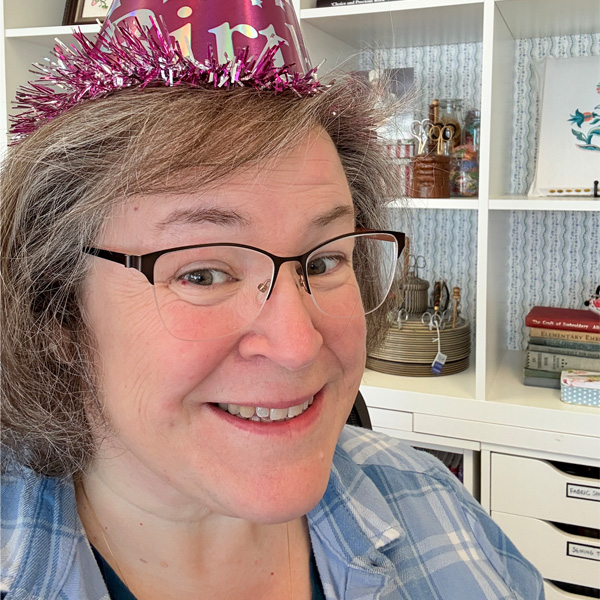
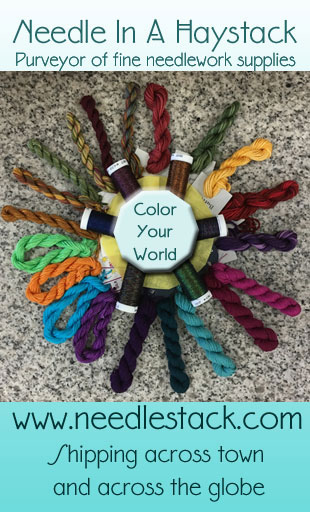
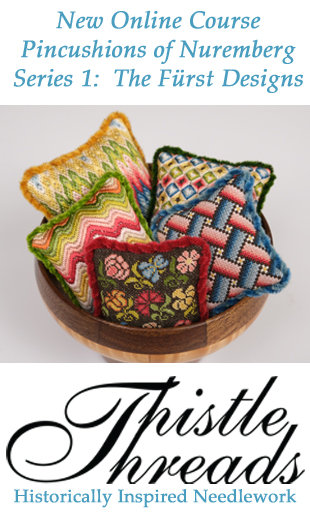
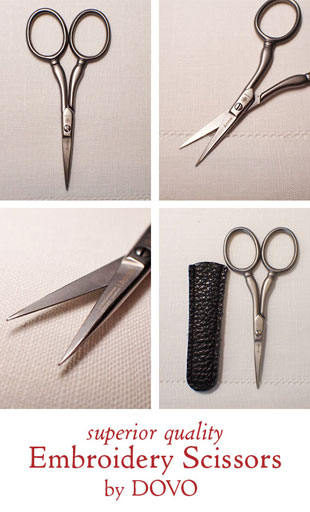

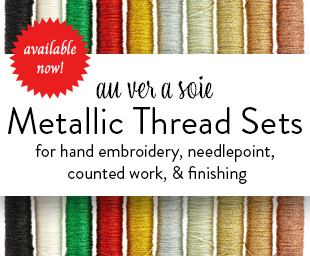
Hi Mary,
I really appreciate this article and the question, because I was literally having this discussion with my very patient husband last night. He is familiar with embroidery because his mother is fantastic at it (she’s been doing it for 45+ years and does all sorts of extremely intricate advanced work) but has no interest in it himself. I’m at a decidedly more beginner level (probably advanced beginner). My reasoning would be as follows:
1) There’s several projects I want to tackle but I want to “be good” at embroidery before I do them (meaning be comfortable with a decent number of stitches) so I can sit down and do the said projects without having to look up these stitches and then have the project not turn out as well as I would like them to because I fumble with said new stitches.
2) I flounder a little bit as to my own level of mastery of embroidery, because I think like you and my mother in law, got to learn all sorts of stitches and techniques from the many kits that used to be available in the 1970s-1980s time frame (I wasn’t born until post 1990) and now there is so much less available/ a lot of needlework stores are gone/have such smaller selections and it’s hard to gage what I really know.
3) I would love to eventually create and post my own ideas and projects as another source of learning to help bring embroidery “back” into popularity, but again, it’s hard to know what is “mastery enough” to do this type of thing. (I’m extremely aware of my current need to practice and expand to polish my own work.) But again, I want to know how to do a decent number of stitches work so I can incorporate different techniques into different projects… because if you don’t know enough stitches, your ideas can be limited and it’s hard to pull ideas together without a range of knowledge of different stitches.
So that’s my 2 cents when it comes to this topic… and at least where I struggle.
~Sarah
Hi, Sarah,
Well, to encourage you just to go forward, here’s my “devil’s advocate” response to your points:
1. If you take up projects that you really want to do, even if you have to figure out stitches, you’re more likely to a) enjoy doing the project; b) complete the project; c) gain a better mastery of techniques because you’re using them in context on something you’re enthusiastic about. You’ll likely remember them better, too.
2. You don’t have to learn many stitches to increase your level of mastery of embroidery. You will likely only ever use a handful of stitches regularly, and the others will end up being complimentary, occasional-use stitches. The more obscure stitches don’t necessarily indicate “mastery of embroidery” – in fact, mastering the small repertoire that you’ll use repeatedly for the type of stitching you’re interested, and mastering all the aspects that help produce a high-quality finished project, are more indicative of “mastering embroidery.” Anecdotal: I attended a seminar taught by a Royal School of Needle graduate who had been in the needlework design and teaching business for many years. In the middle of the class, as she was teaching her project, she took out a stitch dictionary to look up how to do the coral knot stitch. And she had already stitched the sample project, which had many lines of coral stitch on it! But she still had to look it up.
Also, I think perhaps your history on resources might be a bit backwards. In the late 70’s (also before my time), counted cross stitch started taking center stage in the US as far as needlework goes, and by the 80’s, most stitching shops were dedicated either to counted cross stitch, needlepoint, or both. In the 80’s, surface embroidery was not very common (aside from occasional crewel work here and there, leftover from the 70’s), and this carried through to the 90’s and early 2000’s. While there were small pockets of knowledgeable embroiderers around – and some very skilled designers, especially with historical interest in embroidery – they were extremely hard to find, even in the 90’s and early 2000’s, because the internet wasn’t a big part of the scene yet. So in fact, today, people have much better access to learning resources for surface embroidery than they did from the late 70’s to the beginning of the 2000’s.
3. When it comes to design, incorporating too many stitches can often muddle a design. Best to start simply, and expand as your comfort with design and the use of stitches grows. Don’t hold off starting because you don’t know “everything” you want to know. Just start!
The fear of starting, or the hesitation to start, often holds people back from ever actually doing anything. Just start! Find a design you like – find a kit you like, designed by someone else. Don’t pay attention to how hard it looks. Pay to attention to whether or not it “calls your name.” If you find something you really love, get it and do it. Use it to learn from, and then keep moving forward.
Or if you already have a vision of what you want to do with your own design, just start it. You might make mistakes. You will make mistakes. Mistakes are just learning opportunities. You’ll never move forward if you don’t start. And if you wait to know everything you think you need to know before you start, then you won’t start.
Just start!
Sarah – in regards to point 1, doodle cloth to the rescue! It gives a chance to practice a stitch before doing it on the real project. Or try a stitch with various threads to see what you really want to use instead of ripping out the project. I use one for new-to-me complicated stitches and for stitches I’ve done before but not in a while. It may seem like a waste of thread & linen, but it really is a sanity saver.
The fish brought back good memories. I had to smile. I guess it has been eons, huh? Having watched your life’s progression, it was nostalgic. Be well
I teach “Beginning Embroidery” at the local Folk School (Arbutus — in Olympia, WA). Most students know very little and some know “some.” We are there to learn techniques and see what other knowledge that uncovers (threads, needles, fabrics, how to transfer patterns, etc.) — and I FORBID them to worry about making the sample cloth we work on look beautiful!!! They are NOT to be concerned if it looks good on the front —- or the back —–. It is strictly for learning. I even encourage them to write on the cloth the name next to each stitch. (With a Micron pen.) Interspersed during the course I do give them some simple designs to try out their new skills!!
One of the items on my bucket list is to learn all the stitches and actually come up with a design (or designs) that uses all of them.
I like the EGA pennant sampler/bunting! Nice that it also teaches how to handle angles. I see you had TAST listed as a source in the first post you linked to. There’s also Queenie’s Needlework Sunday Stitch School, where she has people work the stitches on Aida and linen, and sometimes another fabric. And of course, your non-sampler samplers are awesome change of pace.
I learn new stitches as I need them. That tends to leave me using the same stitches over and over. The value of learning new stitches with no plan – so options come to mind the next time a project wants something different. Also, no matter how good the photography, photos don’t show the full texture of the stitches, nor the sheen (or lack of) the thread used.
Your sampler projects are a nice change of pace from making a traditional sampler.
Oooh, that second-to-last sentence sounds like a challenge!!! That would be fun to work on . . . my wheels are spinning now! I’m going to start with that plaited braid stitch! 🙂
In my very undisciplined embroidery practice, I love different stitches for what they can do to further a design. Mary’s printed pattern dish towels are so fun when you can play with the textures of buttonhole wheels and pistil stitch for flowers, chained bar stitch and back-stitched chain for angel gown borders, etc. Elizabetta Sforza’s “In a Wheat Field” was tons of fun with her textured stitches. I use a doodle cloth often, too. Many stitch and color combination ideas get left on that doodle cloth drawing board! Mary’s site with her wonderful videos is my first place to look for inspiration but I also like Sharon Boggen’s TAST and her underlying “stitch dictionary”. Sometimes I peruse social media for ideas or search (google) for, say, a leaf stitch or a reversible stitch.
After a few years of this, I made a list and found that I knew (or had done) over 20 different stitches! And, it was all practical and fun…
Have fun! Make beauty! even if it isn’t exactly what you had in mind at first.
laura
Hi Mary, I’ve really enjoyed reading your response to this question as well as the comments and your replies below. I am an advocate for the doodle cloth that you recommended years ago. It has definitely taken the anxiety away over trying new stitches and maybe making a mess of them. I started using that when I began the Carolyn Pearce Home Sweet Home workbox because there were so many new-to-me stitches in that project and I would have procrastinated starting forever without that safe practice space. I was attracted to the project in the first place because of the stitch variety and I seem to remember you referring to it as a sampler of sorts because of the quantity of stitches used. I would certainly still have to look up and practice some of the more unusual ones at point of need, but I know working this project has given me a great deal more confidence and dexterity over a core group of stitches that I use repeatedly as well as a never ending interest in learning new ones as they appear in the projects I choose to work. I’m so grateful for your many articles on stitch craft, but especially your enthusiasm recommending Home Sweet Home because it has been a wonderful embroidery foundation for me to work from.